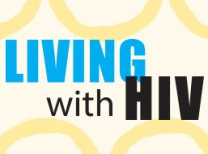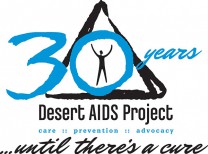Unless you are living with it or close to someone who has, you may not realize that 33 years have passed since AIDS was first identified. That was June 1981, when The New York Times reported an ominous “gay cancer” spreading among homosexual men. But few beyond gay activists and rogue doctors paid attention. There was no response from the Reagan Administration, and it took 15 years to develop effective medications. And still, AIDS remains an epidemic.
Some years ago, several journalists and medical experts (who should have known better) suggested we were near a “post-AIDS” world: magic meds, longer survival, fewer opportunistic infections, etc. All those factors are true, but any claims that AIDS is nearly over are absurdly uninformed. Infection rates remain high among younger gay and minority men, seniors, and “low information” groups. As activist Peter Staley said recently, “The AIDS crisis has not ended, it’s just become more deeply rooted, intertwined with poverty, racism, incarceration and homophobia. HIV embeds itself wherever people face poor health and is a marker of broader injustices in the country today.”
UNAIDS, an advocacy branch of the United Nations, estimates that globally, 54 percent of people infected with HIV are unaware of it. Last month’s International AIDS Conference concluded that information and prevention are still huge challenges, while progress toward a cure remains frustratingly elusive.
In those 33 years, a huge AIDS pharma-academia-industrial complex has developed. AIDS, Inc. is big business and a mixed blessing. Certainly, we owe much to research, funding, philanthropy, treatments, legislative protections and raised awareness that increased survivability. But often it seems that pharmaceutical companies are more concerned with shareholders than HIV customers. Drug prices are exorbitant and it’s only through state ADAPs (AIDS drug assistance programs) that many patients can obtain medications.
Fortunately, there are numerous organizations working on behalf of patient advocacy and providing critical care to ALL who need it. Desert AIDS Project is certainly leading the way. This year marks 30 years since D.A.P. was organized and became the most comprehensive resource and service provider for people in the Coachella Valley living with HIV/AIDS, as well as a national model for other AIDS service organizations. Its founders were among the first to recognize both the peril and need presented by the strange new disease. As a volunteer at D.A.P., I regularly observe how AIDS remains with us in varying stages and manifestations. If you ever want to see for yourself, come and visit.
And if you’d like to know what it was really like in pre-meds days, read Borrowed Time, by Paul Monette. It’s not a comforting read, but an unsentimental distillation of life at AIDS Ground Zero. It’s among the best depictions of an unexpected and unprecedented era, made more poignant by the author’s death from AIDS in 1995. Let’s hope the book remains a period piece.







































Comments (0)